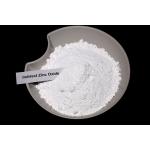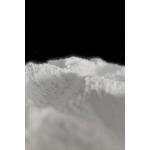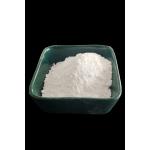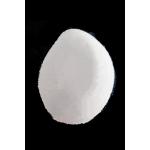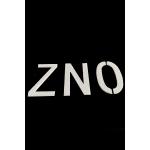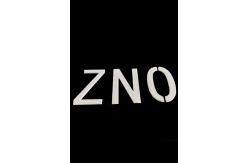Zinc Oxide Product IntroductionProduct DescriptionZinc Oxide (ZnO), also known as zinc oxide powder, zinc white, or
zinc oxide white, is an inorganic compound with the chemical
formula ZnO and a molecular weight of 81.39g/mol. It exists as a
white solid powder, odorless and tasteless, difficult to dissolve
in water and ethanol but soluble in acids, aqueous sodium hydroxide
solutions, ammonium chloride, etc. ZnO possesses high chemical and
thermal stability, with a melting point of approximately 1975°C and
a boiling point as high as 2360°C. Its crystalline structure, most
commonly in the wurtzite hexagonal form, endows ZnO with excellent
electrical, optical, and piezoelectric properties. ZnO Parameters (Table)| Parameter Name | Value |
|---|
| Chemical Formula | ZnO | | Molecular Weight | 81.39g/mol | | Appearance | White Solid | | Melting Point | 1975°C | | Boiling Point | 2360°C | | Density | 5.606g/cm³ | | Water Solubility | Insoluble in Water | | Refractive Index | 2.008~2.029n²⁰/D | | CAS Registry Number | 1314-13-2 | | EINECS Registry Number | 215-222-5 |
Product Characteristics- High Chemical Stability: Capable of maintaining stability under harsh environments such as
high temperatures, high pressures, strong acids, and strong bases.
- Excellent Electrical and Optical Properties: Features a large bandgap and exciton binding energy, high
transparency, and excellent room-temperature luminescent
properties.
- Non-toxic and Harmless: Poses no harm to humans or the environment, complying with
environmental protection requirements.
Product Advantages- Versatile Application Fields: Used in plastics, silicate products, synthetic rubber,
lubricating oils, paints and coatings, ointments, adhesives, food,
batteries, flame retardants, and more.
- Enhanced Product Quality: As an additive, it significantly improves product quality and
performance, such as enhancing wear resistance and aging
resistance.
- Environmental Value: Utilized in manufacturing eco-friendly paints, plastics, and
other materials, reducing environmental pollution.
Industry Sectors- Rubber Industry: Serves as a reinforcing agent and vulcanization accelerator for
rubber.
- Paint Industry: Acts as a reinforcing agent for paint films, enhancing
antibacterial, antifungal, and weather-resistant properties.
- Semiconductor Field: Used in manufacturing liquid crystal displays, thin-film
transistors, light-emitting diodes, and other products.
- Cosmetics Industry: Provides oil absorption and concealing effects, used in
sunscreens, foundations, and other products.
- Environmental Protection Field: Applied in water treatment, air purification, and the manufacture
of eco-friendly materials.
Process FlowThe production process of zinc oxide mainly includes a batching
system, feeding system, rotary kiln system, slag water quenching
system, oxidation cooling system, dust collection and bagging
system, and flue gas desulfurization system. The rotary kiln system
is the core equipment, where ZnO is obtained through
high-temperature oxidative roasting. Depending on raw materials and
processes, production methods can be divided into direct, indirect,
acid, and ammonia methods. TheoryZnO's large bandgap and exciton binding energy contribute to its
excellent room-temperature luminescent properties. Meanwhile, its
wurtzite hexagonal crystalline structure grants ZnO good
electrical, optical, and piezoelectric properties. These
theoretical foundations provide a scientific basis for ZnO's
applications in multiple fields. ServicesWe offer comprehensive pre-sales, in-sales, and after-sales
services, including technical consultations, product customization,
logistics distribution, usage guidance, and more. Our professional
team is dedicated to addressing any questions and ensuring your
satisfaction with our ZnO products. Packaging and StorageZnO products are typically packaged in woven bags or plastic drums,
ensuring safety and stability during transportation and storage.
Store in a dry, well-ventilated, dark place, avoiding contact with
moisture, high temperatures, and flammable materials. Precautions- Personal Protection: When producing and using ZnO, wear protective masks, gloves, and
goggles to avoid inhalation or skin and eye contact.
- Fire Prevention Measures: Although ZnO is non-flammable, keep it away from fire sources and
flammable materials to prevent fires.
- Spill Handling: In case of ZnO spills, immediately cover with sand or inert
materials and collect for safe disposal to avoid environmental
contamination.
Through this introduction, you should have a more comprehensive
understanding of ZnO products. For any questions or needs, please
feel free to contact us. |
